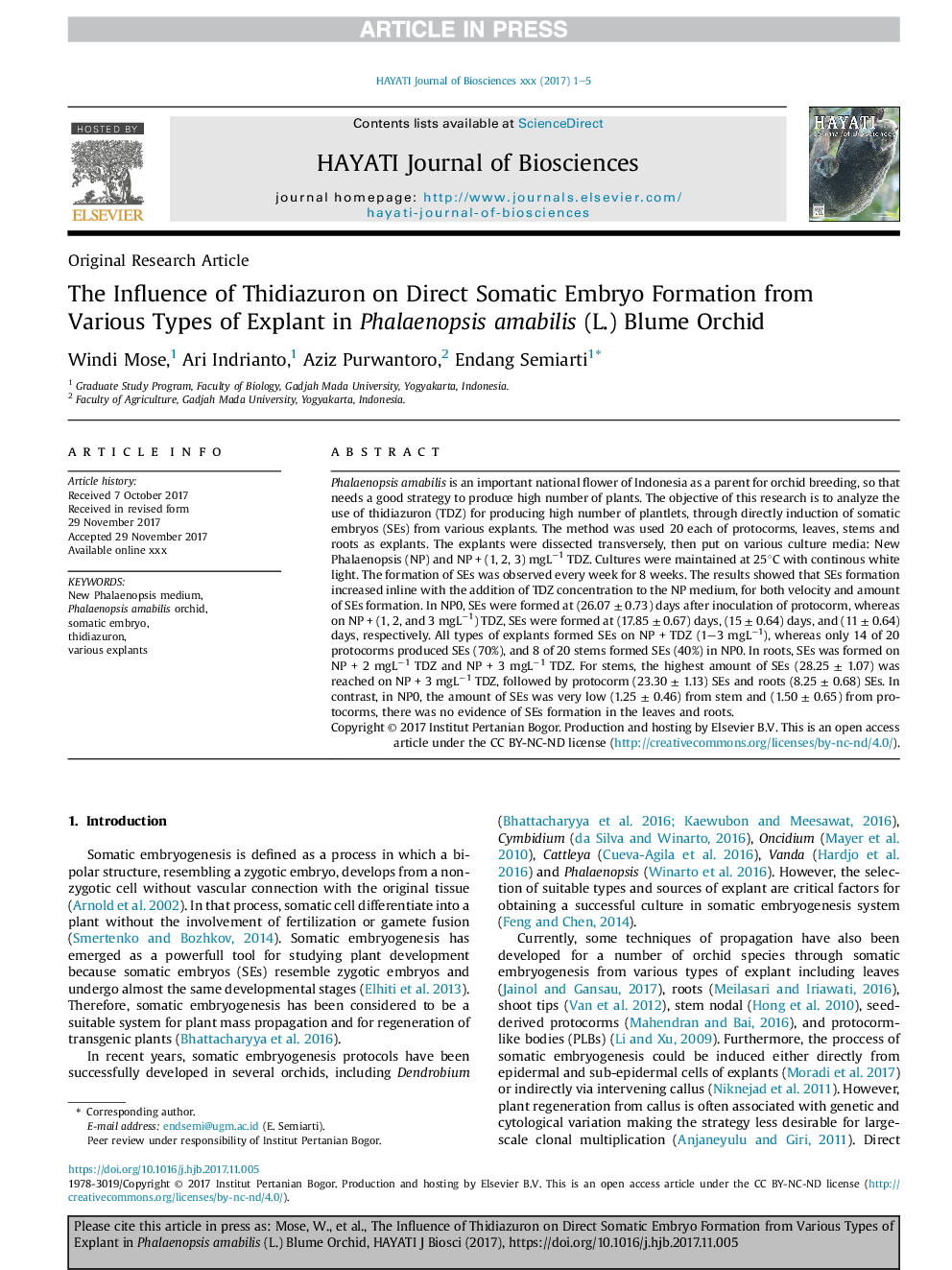| Article ID | Journal | Published Year | Pages | File Type |
|---|---|---|---|---|
| 8415037 | HAYATI Journal of Biosciences | 2017 | 5 Pages |
Abstract
Phalaenopsis amabilis is an important national flower of Indonesia as a parent for orchid breeding, so that needs a good strategy to produce high number of plants. The objective of this research is to analyze the use of thidiazuron (TDZ) for producing high number of plantlets, through directly induction of somatic embryos (SEs) from various explants. The method was used 20 each of protocorms, leaves, stems and roots as explants. The explants were dissected transversely, then put on various culture media: New Phalaenopsis (NP) and NP + (1, 2, 3) mgLâ1 TDZ. Cultures were maintained at 25°C with continous white light. The formation of SEs was observed every week for 8 weeks. The results showed that SEs formation increased inline with the addition of TDZ concentration to the NP medium, for both velocity and amount of SEs formation. In NP0, SEs were formed at (26.07 ± 0.73) days after inoculation of protocorm, whereas on NP + (1, 2, and 3 mgLâ1) TDZ, SEs were formed at (17.85 ± 0.67) days, (15 ± 0.64) days, and (11 ± 0.64) days, respectively. All types of explants formed SEs on NP + TDZ (1-3 mgLâ1), whereas only 14 of 20 protocorms produced SEs (70%), and 8 of 20 stems formed SEs (40%) in NP0. In roots, SEs was formed on NP + 2 mgLâ1 TDZ and NP + 3 mgLâ1 TDZ. For stems, the highest amount of SEs (28.25 ± 1.07) was reached on NP + 3 mgLâ1 TDZ, followed by protocorm (23.30 ± 1.13) SEs and roots (8.25 ± 0.68) SEs. In contrast, in NP0, the amount of SEs was very low (1.25 ± 0.46) from stem and (1.50 ± 0.65) from protocorms, there was no evidence of SEs formation in the leaves and roots.
Keywords
Related Topics
Life Sciences
Agricultural and Biological Sciences
Ecology, Evolution, Behavior and Systematics
Authors
Windi Mose, Ari Indrianto, Aziz Purwantoro, Endang Semiarti,
